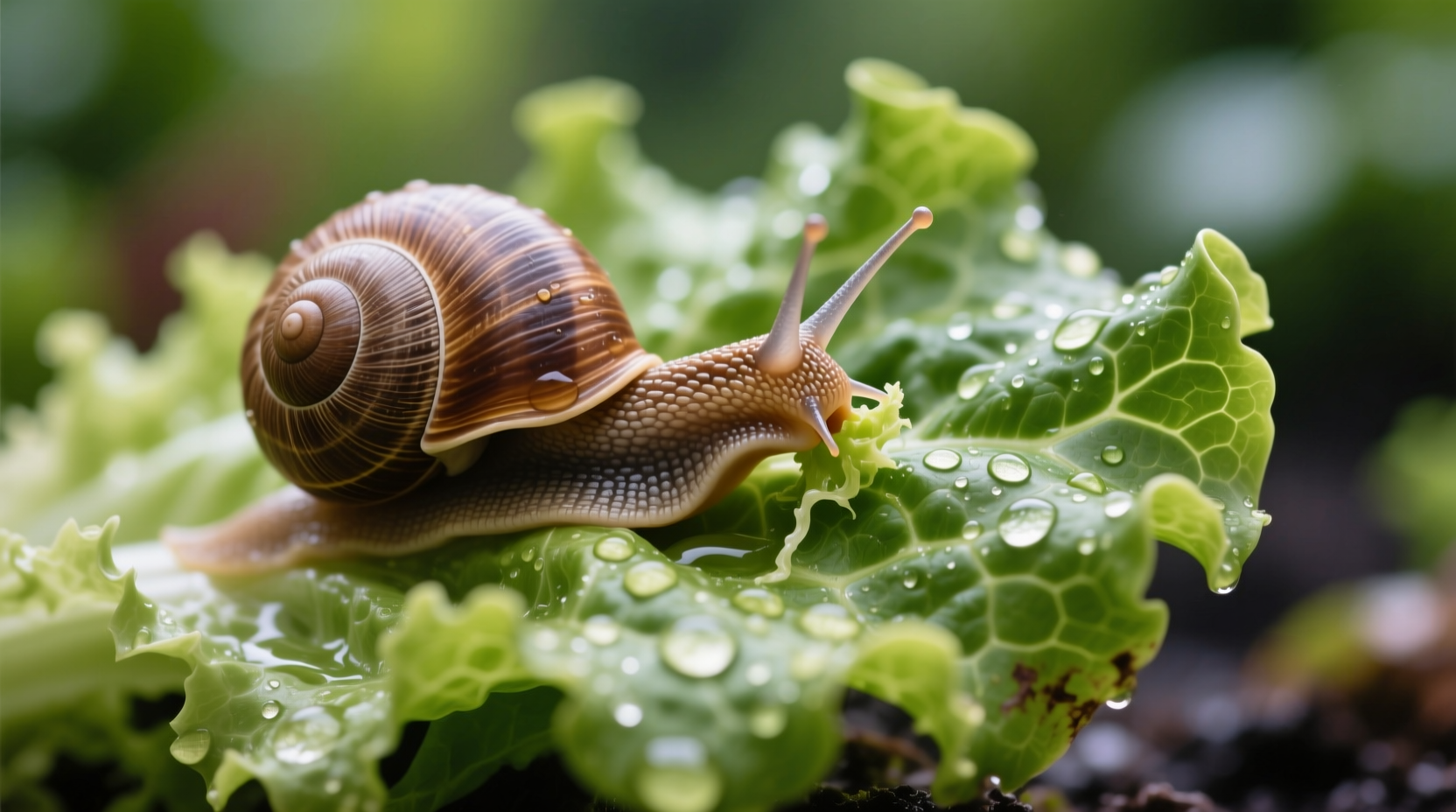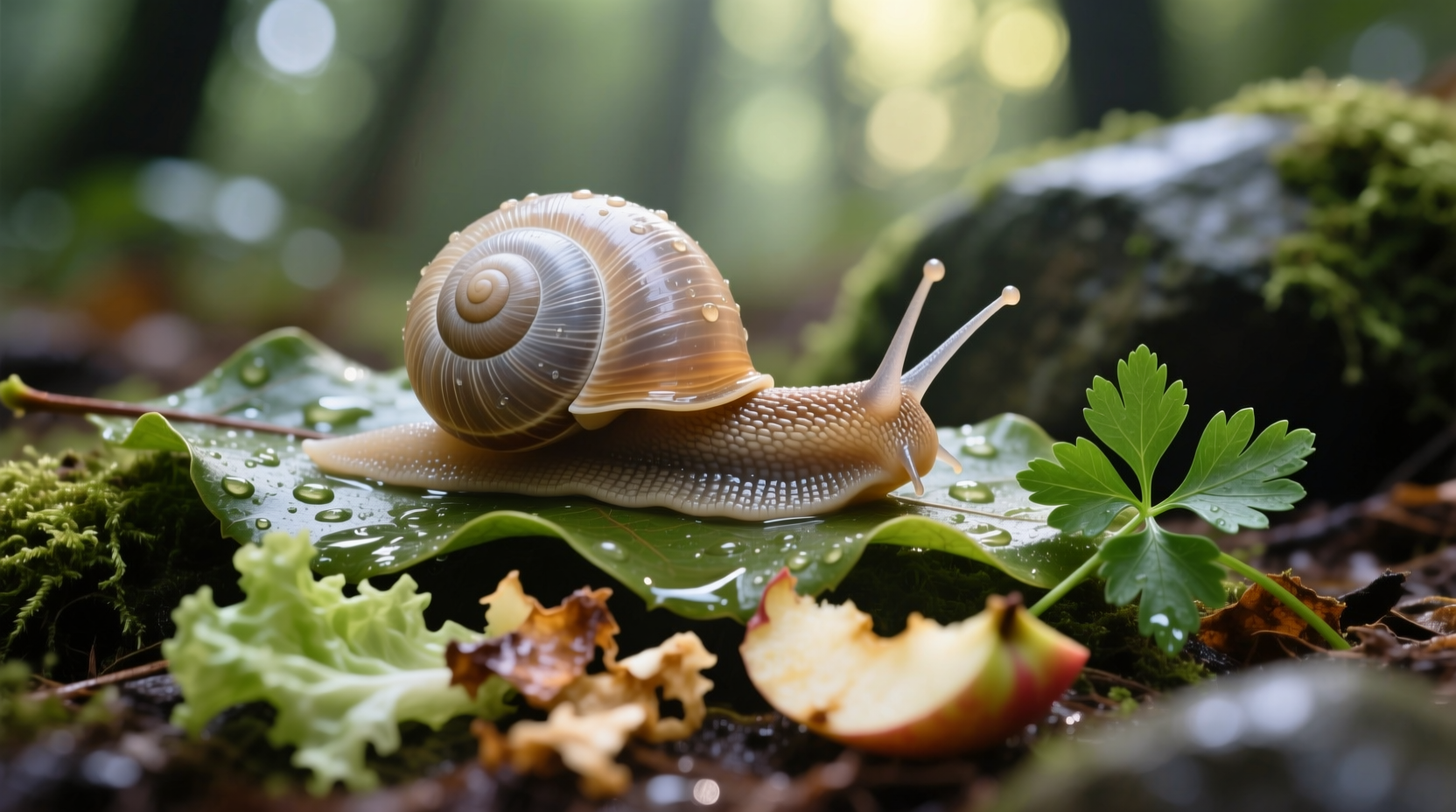Understanding what snails eat is essential whether you're caring for pet snails, managing garden pests, or simply curious about these fascinating mollusks. This comprehensive guide reveals the dietary habits of different snail species, providing practical feeding recommendations backed by biological research.
Natural Diet of Wild Snails
Wild snails demonstrate remarkable adaptability in their feeding habits. Land-dwelling species primarily consume decaying plant matter, fresh leaves, and fungi. Their radula (a tongue-like organ with thousands of microscopic teeth) allows them to scrape food from surfaces efficiently. Garden snails (Helix aspersa) particularly favor tender seedlings, lettuce, and strawberries, causing significant damage to crops.
Aquatic snails play a crucial ecological role as nature's cleanup crew. Freshwater species like mystery snails (Pomacea diffusa) feed on algae, dead plant material, and detritus. Marine snails such as abalone primarily consume kelp and other seaweeds. This natural recycling behavior helps maintain healthy aquatic ecosystems by preventing organic matter buildup.

Optimal Nutrition for Pet Snails
Proper nutrition is vital for pet snail health and shell development. Calcium deficiency remains the most common dietary issue, leading to weakened, pitted shells. The ideal pet snail diet includes:
- Leafy greens: Romaine lettuce, kale, and dandelion greens provide essential vitamins
- Vegetables: Cucumber, zucchini, and bell peppers offer hydration and nutrients
- Calcium sources: Cuttlebone, eggshells, or calcium powder for shell maintenance
- Fruits (occasionally): Apple, melon, or berries as treats (in moderation)
Avoid feeding snails salty, spicy, or acidic foods. Never provide lettuce varieties with high lactucarium content like iceberg lettuce, which can be harmful. Commercial snail calcium supplements specifically formulated for gastropods provide the most reliable mineral source.
Garden Snail Management Through Dietary Understanding
Knowledge of snail feeding preferences enables effective, eco-friendly garden management. Research from the University of California Agriculture and Natural Resources shows snails demonstrate clear preferences for certain plants:
| Highly Preferred Plants | Moderately Preferred Plants | Generally Avoided Plants |
|---|---|---|
| Strawberries | Beans | Lavender |
| Lettuce | Peas | Rosemary |
| Hostas | Tomatoes | Sage |
| Marigolds | Cabbage | Fuchsias |
Strategic planting of deterrent species around vulnerable crops creates natural barriers. Copper tape works effectively as a barrier because it creates a mild electrical reaction when snails attempt to cross it, disrupting their feeding behavior without causing harm.
Commercial Snail Farming Practices
Heliciculture (snail farming) follows strict dietary protocols to ensure optimal growth and flavor. French escargot farms primarily raise Helix pomatia (Roman snails) and Helix aspersa (garden snails) on specialized diets during the fattening phase:
- Pre-fattening phase: Natural vegetation in controlled outdoor pens
- Fattening phase (3-4 weeks): Custom feed mixtures of cereals, soybean meal, and calcium carbonate
- Pre-slaughter cleansing: 10-14 day period with only water and minimal vegetation to purge digestive system
The European Food Safety Authority regulates commercial snail farming practices, requiring specific dietary protocols to ensure food safety. Proper nutrition directly impacts the texture and flavor profile of edible snails, with calcium-rich diets producing firmer, more desirable meat.
Special Dietary Considerations by Species
Different snail species have unique nutritional requirements. Understanding these variations prevents common feeding mistakes:
- Mystery snails: Require algae wafers and blanched vegetables; particularly need iodine supplements
- Ramshorn snails: Thrive on decaying plant matter but may require supplemental algae
- Giant African Land Snails: Need high-calcium diets and diverse vegetation; consume up to 500g of food daily
- Apple snails: Benefit from occasional protein sources like fish flakes in addition to vegetation
Seasonal changes significantly impact snail feeding behavior. During dry seasons or cold months, many species enter estivation or hibernation, dramatically reducing their food intake. Pet snail owners should adjust feeding schedules accordingly during temperature extremes.
Common Feeding Mistakes to Avoid
Many snail caretakers unknowingly compromise their pets' health through common dietary errors:
- Insufficient calcium: Leads to shell deterioration and metabolic bone disease
- Overfeeding fruits: Causes digestive issues due to high sugar content
- Ignoring water quality: Aquatic snails require clean, dechlorinated water with proper mineral balance
- Providing toxic plants: Some common houseplants like peace lilies are poisonous to snails
Research published in the Journal of Molluscan Studies confirms that snails demonstrate food preferences based on nutritional content, actively seeking out calcium-rich options when deficient. Observing your snail's feeding behavior provides valuable insights into their nutritional needs.
What vegetables are best for feeding pet snails?
Leafy greens like romaine lettuce, kale, and dandelion greens provide essential nutrients. Zucchini, cucumber, and bell peppers offer excellent hydration and vitamins. Always wash vegetables thoroughly and remove any uneaten portions after 24 hours to prevent mold growth.
Do snails eat dead plants or only living vegetation?
Snails readily consume both dead and living plant matter. In fact, many species prefer decaying vegetation as it's easier to digest. Wild snails play an important ecological role by breaking down dead plant material, while pet snails benefit from a combination of fresh and slightly aged vegetation.
How often should I feed my pet snail?
Adult land snails typically need feeding every 1-2 days, while younger snails may require daily meals. Aquatic snails often graze continuously on algae. The amount varies by species and size - a general guideline is to provide enough food they can consume within 24 hours without excess remaining.
Can snails eat meat or protein sources?
Most land snails are strictly herbivorous, but some aquatic species like apple snails benefit from occasional protein sources. These may include fish flakes, sinking carnivore pellets, or blanched peas. Never feed land snails meat products as their digestive systems aren't designed to process animal proteins.











 浙公网安备
33010002000092号
浙公网安备
33010002000092号 浙B2-20120091-4
浙B2-20120091-4